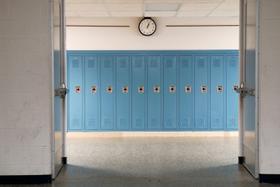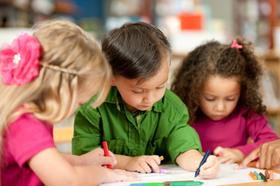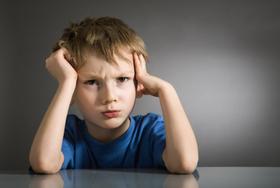The elementary school ages are considered to be the fundamental grades and stages of development. With this in mind, it is important that children are taught positive behaviors and habits early in life. By teaching children positive behaviors at a young age, kids are more able to understand and engage in long-term attitudes and actions that will guide them toward future success. To encourage students, and to teach all kids positive behaviors, elementary schools across the country have implemented positive behavior programs to improve student awareness, knowledge, and development.
Positive Behavior Programs in Public Elementary Schools
Minnesota School-Wide Behavior Program
While many local schools and smaller communities have adopted behavior programs, the state of Minnesota has established a larger state-wide agenda to enhance the education of positive student behaviors. According to the Minnesota school records, the positive behavior program is used to help all students in all school environments, including behaviors in the classroom, hallways, cafeteria, and so forth. As Minnesota school experts explain, “Schools that implement school-wide positive behavior interventions and support are schools that have decided that their current discipline process is not effective in helping students to change their behaviors.” To change and improve student behaviors, Minnesota schools identify specific behavioral problems, find ways to reinforce and reward positive behavior alternatives, and then consistently enforce meaningful consequences when students choose to misbehave.
This video looks at good and bad examples of positive behavior in school.
Teachers and Behavior Instruction
As the Minnesota program outlines, teachers play a specific and powerful role in identifying and guiding students’ behaviors. Teachers are required to provide clear examples and guidelines for what behaviors are acceptable and unacceptable, as children are to learn that their positive behaviors are expected to be upheld throughout the entire school building.
Once these lessons and guidelines are established, teachers and staff will continue guiding students with clear consequences, positive reinforcement, and praise. “When students meet school-wide expectations, school staff will note their success with positive reinforcement. This might include praise or coupons that can be used to purchase items at school. It might include weekly drawings for rewards, special privileges, or recognition during student assemblies. All staff (principal, teachers, lunchroom staff, bus drivers, librarians, janitor, etc.) would use the system.”
McNair Elementary School is another public school that has implemented a positive behavior program; however, unlike the public schools of Minnesota, McNair’s program is locally designed and supported. To initially spark their program, McNair Elementary engaged students in a positive behavior assembly that focused on core issues of conduct: “Be Responsible, Be Respectful, Be Cooperative, Be Kind and Be Safe.” While this approach is rather new to the systems of McNair, 14 other schools in their district have already implemented their own uniquely designed strategies and steps for positive behavior education and encouragement. As McNair explains, their district has created these programs to foster a variety of lessons: “Positive behavior support focuses on creating and sustaining primary (school-wide), secondary (classroom) and tertiary (individual) support systems that improve lifestyle results (personal, health, social, family, work, recreation) for all children and youth by making problem behavior less effective, efficient, and relevant and desired behavior more functional.”
Teachers and Behavior Instruction
Just like the Minnesota program, the McNair behavior program also requires fundamental teacher support. At McNair, teachers help reward and encourage positive behavior by providing a student with a small “paw print” on a sheet of paper; this reward aligns with the school’s mascot and is recorded with the student’s name and class on the sheet.
As students earn “paw prints,” both individual students and whole classes can earn rewards. For example, “Classes that earn 10 Paws will hear their names announced on the public address system while 40 Paws will earn a class 10 minutes of extra free time. Seventy or more Paws will be rewarded with a classroom party. Class flags hung from doorknobs will recognize Paws prize winners.” As a result, positive reinforcement does not have to be material or extravagant; on the other hand, most young children just simply crave attention and respectful recognition for their efforts.
This video offers suggestions for developing and implementing a positive behavior plan.
What Parents Can Do
While each public school has its own behavior agenda and program, parents can help foster positive behaviors outside of school by setting up clear boundaries and explaining acceptable behavior. When a child breaks the rules or displays unacceptable behaviors, then a parent should communicate and follow through with clear consequences.
On the other hand, when a child demonstrates positive behaviors, a parent can reward their child with simple verbal feedback, such as “good job, I noticed you (fill in the statement or behavior here).” Feedback should be specific and genuine, as the details about the positive behavior help again reinforce the lessons that a child is being taught.
Questions? Contact us on Facebook. @publicschoolreview














